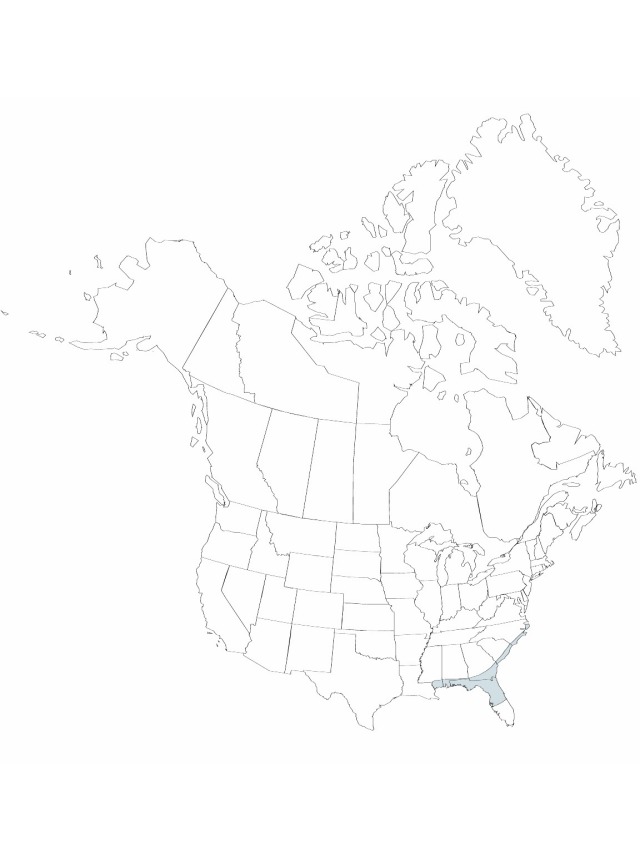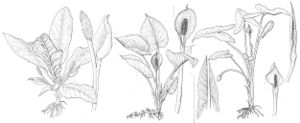Peltandra sagittifolia
Memoirs of the Torrey Botanical Club 5: 102. 1894 (as sagittaefolia).
Leaves: petiole pink with green spots basally to green mottled with dark green to purple-green spots apically, 31–59 cm; blade light green, glaucous, 8–31 × (2.6–) 4–11 cm, smaller on average and less variable in shape than in Peltandra virginica; lateral-veins all ± same thickness. Inflorescences 5–12 cm; peduncle 30–58 cm; spathe tube light green inside and out, closed, 1.3–3.4 × 0.6–1.7 cm; spathe blade white, widely open, 3.8–9.4 × 1.9–4 cm, margins not undulate; spadix nearly cylindric, ±about 1/2 as long as spathe. Flowers: pistillate flowers pale green, ovaries 1-locular; ovules 1; staminate portion of spadix yellow; sterile flowers between pistillate and staminate flowers and also frequently a few at apex. Infructescences enclosed by spathe tube, pulling opening as fruits mature. Fruits red, 8.6–12.6 × 5.4–7 mm. Seeds 1, mucilage present, 7–10 mm. Chromosome number unknown not available.
Phenology: Flowering spring–mid summer.
Habitat: Acidic bogs and swampy woodlands, Atlantic and Gulf coastal plains
Elevation: 0–60 m
Distribution

Ala., Fla., Ga., Miss., N.C., S.C.
Discussion
Peltandra sagittifolia, the rarest least common species of Araceae in North America, is monitored by conservation agencies in all states in which it occurs. Although its range is completely within the range of P. virginica, the two species occur in different habitats. Plants of P. sagittifolia grow only on acidic substrates with a mean pH of 4.8 (range 4.0 to 6.0).
Of conservation interest.
of conservation concern
Selected References
None.
